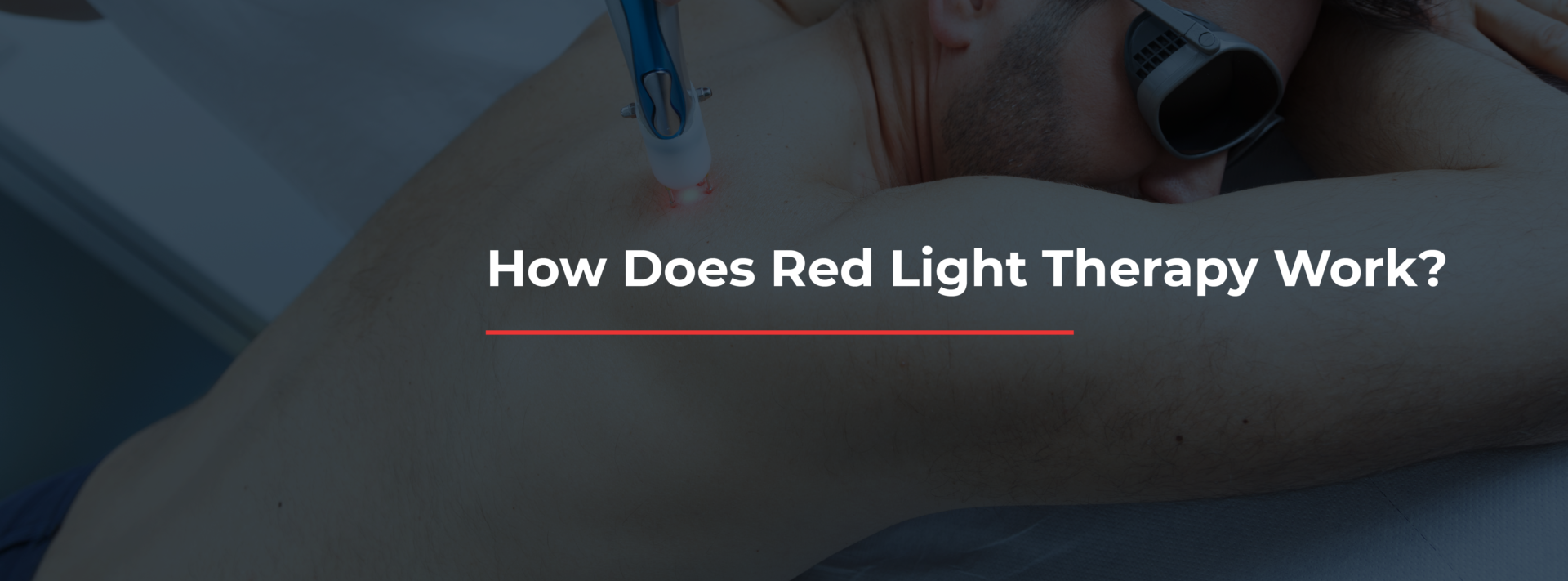
Red light therapy, also referred to as Low-Level Laser Therapy (LLLT) or photobiomodulation (PBM), is a safe, non-invasive treatment. So, how does red light therapy work and how does it apply to your practice?
Medical professionals have found it beneficial in helping treat various conditions including chronic neck and shoulder pain, chronic lower back pain, and over three-hundred nociceptive pain issues.
Its non-invasive nature and effectiveness have made red light therapy devices popular among patients who do not want to resort to painkillers. With the opioid crisis spiraling, this type of technology should be considered by medical practitioners. Especially, those who are looking for alternatives to prescription drugs for their patients.
The technique works by exposing skin cells to concentrated wavelengths of low-level red light targeted to help increase cell reproduction. Here’s a deeper dive into how red light technology works.
The Body’s Powerhouse
Red light therapy works by affecting the body’s mitochondria – also referred to as the body’s powerhouse. Mitochondria is responsible for fueling the body and more specifically each cell. They are similarly described as the body’s power plant because they produce adenosine triphosphate which a cell can use as energy.
Scientists have discovered an undeniable relationship between the mitochondria’s optimum performance and the body’s overall wellness. The sub-optimal performance of mitochondria leads to undesirable physical effects such as aches and pains, unhealthy skin, and immune deficiencies.
Light is capable of providing the body with various nutrients that contribute to overall wellness. An excellent example of this is how the skin synthesizes vitamin D from sunlight while blue light affects the circadian rhythm and, consequently, your sleep pattern.
Both UV light and blue light are part of a group of lights known as bioactive lights. Near-infrared light and red light initiate a biochemical reaction that supports the mitochondria’s ability to absorb oxygen.
Increased oxygen absorption has the potential to improve cell regeneration and healing. Red light puts temporary stress on the skin cells giving the potential of anti-inflammatory and antioxidant responses. Healthier skin cells are nurtured by these responses. Applying temporary stress is like exercising. It’s putting temporary stress on your body subsequently improving overall health.
The best part is that red light laser therapy has proven to show virtually no side effects. It doesn’t need any heat or freezing temperatures and doesn’t require any downtime. Importantly, it causes no unnecessary pain.
Find a ProviderBecome a Provider



